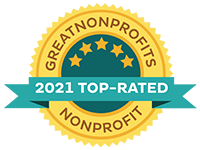Developing the Potential in Children with Attention-Hyperactivity Disorder
Attention-hyperactivity disorder is a neurodevelopmental disorder that has features such as inattention, hyperactivity, and/or impulsivity. For a child to be diagnosed with this disorder, the manifestation of these features in at least two different environments of the life of the child is required—for example, at home, at school, on outings with family and friends, or during travel and other activities.
Parents and educators can observe if the child exhibits the following behaviors:
- Difficulties finishing school tasks or activities
- Constant forgetfulness or loss of personal belongings
- Does not appear to listen to people, as if mentally focused in another place
- Difficulty in organizing materials
- Manifestation of excessive talking, presenting difficulty in waiting her/his turn to speak
- Easily distracted by stimulus
- Usually presents a posture in constant motion, such as the habit of leaving her/his place in the classroom when she/he should remain seated
The attention deficit-hyperactivity may occur according one of these three sub-types: hyperactive-impulsive, inattentive type, or combined hyperactive-impulsive and inattentive.
During the school routine, the child can receive individualized support from the educator, through constant observation, in order to meet the child’s needs. In addition, the school may refer the child to a class of specialized support wherein pedagogical resources are adapted.
It is essential that family and school work jointly in the child’s pedagogical intervention so that everyone involved is working with the same strategies, without the presence of contradictory guidelines.
The education professionals can orient the parents on how to assist the child in the task of homework, as well as in daily routine at home. Often a lack of knowledge or information causes parents to feel insecure in knowing how to assist their child in the best possible way for her/his growth and development.
Here are some tips to assist in the educational work of a child with ADHD/ADD in the school and at home:
- Guide the child with simple and objective rules, staring into her/his eyes at her/his height in order to minimize distractions while guidance is given
- Explain to the child what needs to be done rather than what should not be done in a situation
- When the child performs positive conduct, compliment the behavior by pointing out the positive factors of her/his attitude
- Try to arrange the utensils of the house the same way in order that the child can find them without difficulty
- Develop, along with the child, a system for writing on a chart daily activities, including times for waking up, taking a bath, having breakfast, going to school, doing homework, and playing outdoors, among others
- In the school environment, it is necessary that the teacher acts as a facilitator in the learning process of the student, creating a positive atmosphere for the child, and building relationships with those families that share this need.
- Have patience and goodwill with this student, keeping in mind that like any other child, this student has her/his own time for learning and development
- Establish a teaching routine along with the child and annex it with the class in order that this student can be guided with more confidence and autonomy
- Put in the child’s schedule some important messages to be read by parents in order that they can closely participate in the development of the child
- Use audiovisual resources to better explain the contents of learning in the classroom to the child
Children with learning difficulties have a different way of conceiving the learning, but are fully capable of developing skills and capabilities. The key point is the adaptation of the pedagogical planning and the teaching strategies, which must be in accordance with the individual needs of the student. The joint support of student, parents, and educators is essential in order to perform effective and complementary work that aims to improve the competencies and potential that each child has.









